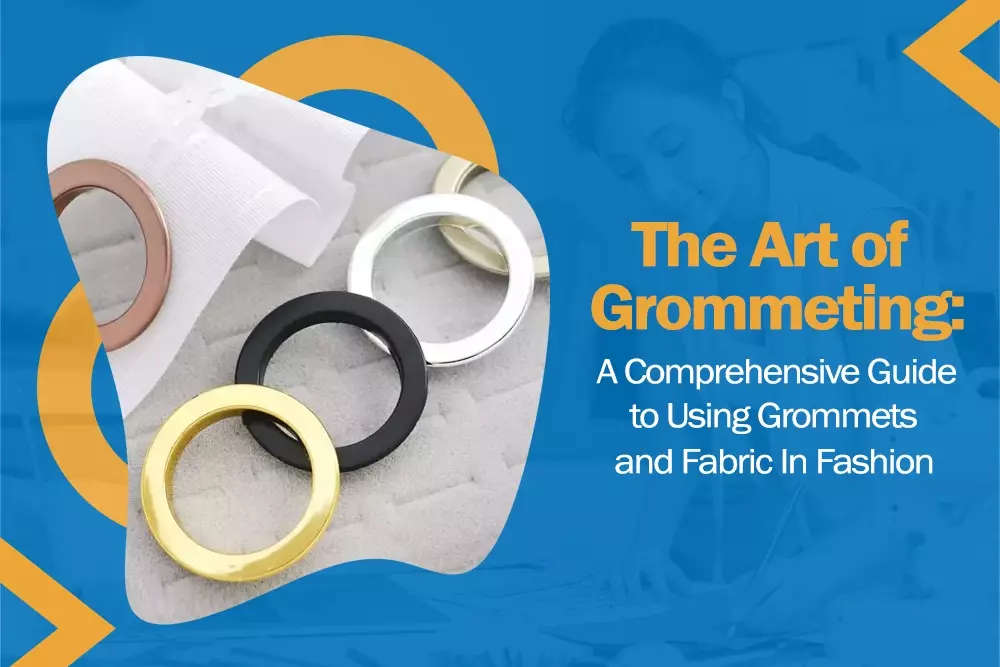How to Use Grommets and Fabric In Fashion
2023-07-14
Grommets are the small rings around holes you see in fabric and textiles. In this comprehensive guide, discover different ways to use grommets for fabric and how to choose and install the right grommets for your project.
Grommets vs. Eyelets
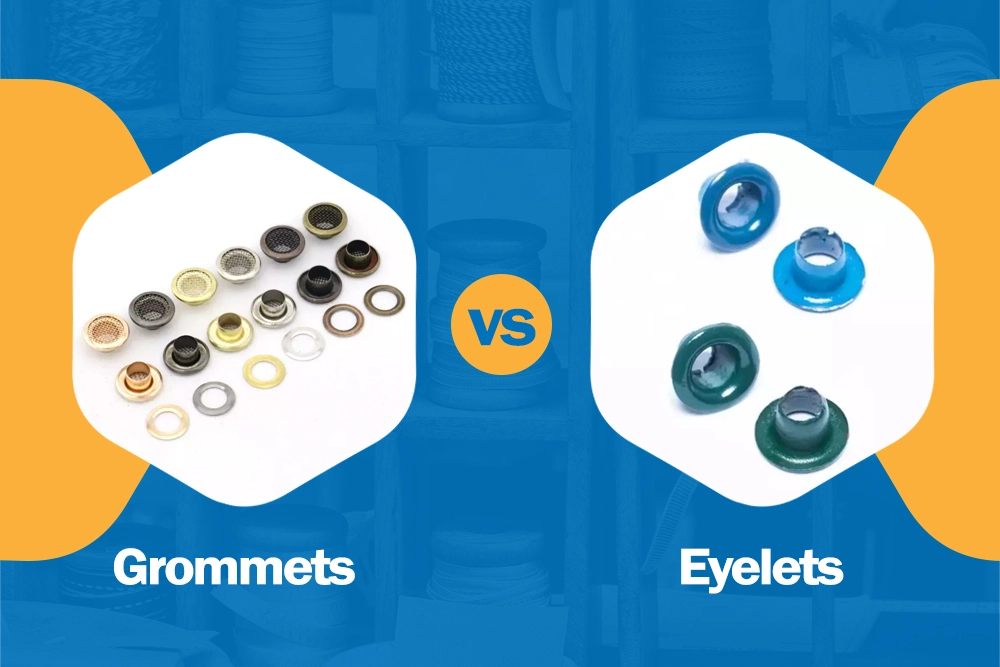
Grommets and eyelets are metal or plastic rings that reinforce holes made in fabric and other materials. Both types of hardware are used for decorative and functional purposes, but there are subtle differences.
Eyelets are smaller and more delicate than grommets, but the most significant difference between grommets and eyelets is how they are installed. Grommets have a front and a back that are pressed around a hole, and eyelets consist of one metal ring.
Eyelets, sometimes called small grommets, are used in various craft projects, including sewing and paper crafts. The holes that your shoelaces go through are often reinforced with eyelets.
Grommets are used for reinforcement when heavier-weight fabrics like canvas are used in projects like awnings, curtains, and tarps. In some cases, grommets must be strong enough to withstand the force of heavy winds or corrosive seawater, so their durability is critical.
How To Choose The Right Grommet For Your Projects
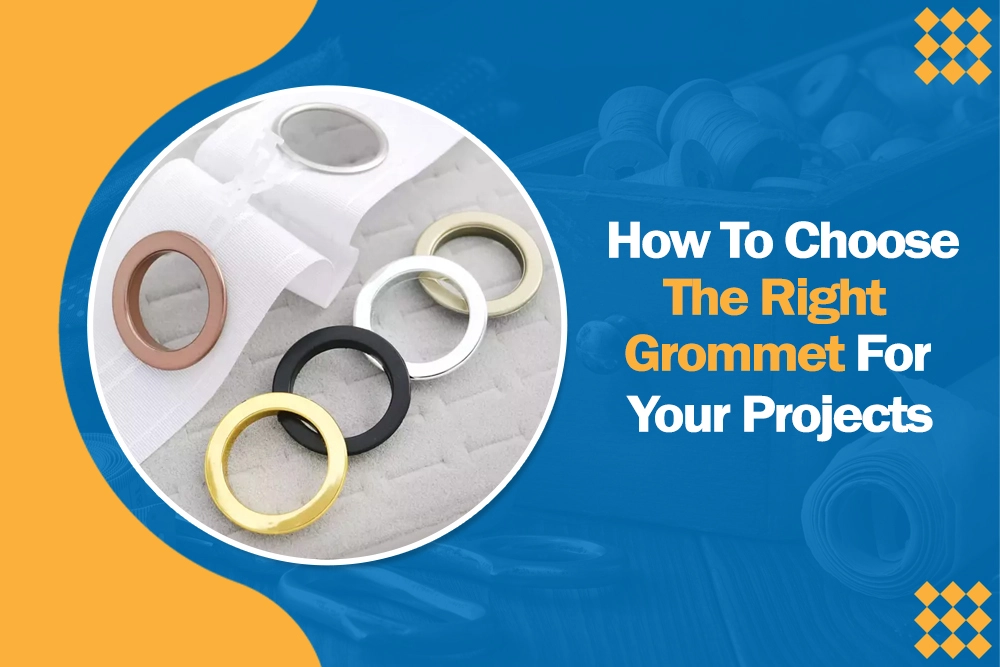
Grommets and eyelets come in various shapes, styles, sizes, and colors, and it’s important to find the right grommet for your project's needs. Learn more about grommet types and materials to gain a better understanding before choosing the right grommet for your project.
Grommets for fabric are sized according to their inside diameter, which is the size of the hole, and they range in size from very tiny all the way up to two inches. Use the Grommet and Eyelet Sizing Chart to learn more about the various sizes of grommets.
Grommet Types
Grommets come as a pair of male and female parts or a grommet and a washer. Several types of grommets and washers are available. The type of project you are working on will determine the best type of grommet to use.
- Plain grommet- Usually made of thin sheet metal or plastic, plain grommets are lightweight. You must pre-cut a hole before setting them, and they aren’t as sturdy as other types of grommets, so they are used for decorative purposes and in light-duty applications, like bags, jeans, and hats.
- Self-piercing grommet- The sharp edges of the grommet cut the fabric when you set them so that they can be installed in one easy step. The washers have small teeth, making them more resistant to motion, so they are commonly used in banners, tarps, tents, and curtains.
- Rolled-rim grommets with spur washers- Rolled-rim grommets are thicker, and the spur washers have larger teeth, making this type of grommet and washer combination the best choice for heavy-duty applications like truck tarps, awnings, and sails.
Grommet Materials
Depending on their use, grommets can be made from many different materials, including rubber. Metal and plastic grommets are the most common for projects made with fabrics and textiles.
Lightweight brass grommets are used in flags, backpacks, and as decorative accents in clothing, while thicker metals are used for industrial applications and marine settings. Plastic grommets are used in curtains, handbags, light-duty tarps, and as decorative accents in fashion. Grommets for hoodies, shoes, and jeans are often made of plastic but are not nearly as durable as metal grommets.
How Grommets Have Been Used In Fashion
Grommets are a trendy embellishment, and sometimes they serve a purpose, like keeping a hole open for a drawstring, but often they are just there for looks. Learn how they are used in clothing, accessories, and shoes.
Clothing
Adding visible grommets to fashion items creates an industrial, unique look that adds an edgy touch to your fashion projects. Typically used for drawstrings, one of their first uses was in corsets in the 1800s, and they are still popular almost two centuries later.
Today, grommets are paired with drawstrings in various clothing items, often as a decorative feature. They are also used alone on pockets, cuffs, and hems, solely for appearance’s sake.
Accessories
One of the most common ways grommets are used is in accessories like belts, purses, wallets, hats, and jewelry. They are often used on straps and pockets as a decorative element.
The creative possibilities are endless because there are so many different types of grommets to choose from. Choose different colors, materials, and sizes of grommets to create any pattern, or use rhinestone grommets to add even more flair to your project.
Shoes
Grommets and eyelets have long been used on shoes for functionality and fashion. As a functional component, they keep the holes for shoe strings from ripping or cracking. Sometimes special mesh grommets are used for venting on various parts of shoes.
Grommets don’t always serve a purpose on shoes, though. They are often there just to add texture or a pop of color. Grommets stand out when contrasting colors are used and make a bold statement.
What Tools Are Need To Attach Grommets To Clothing, Footwear and Accessories?
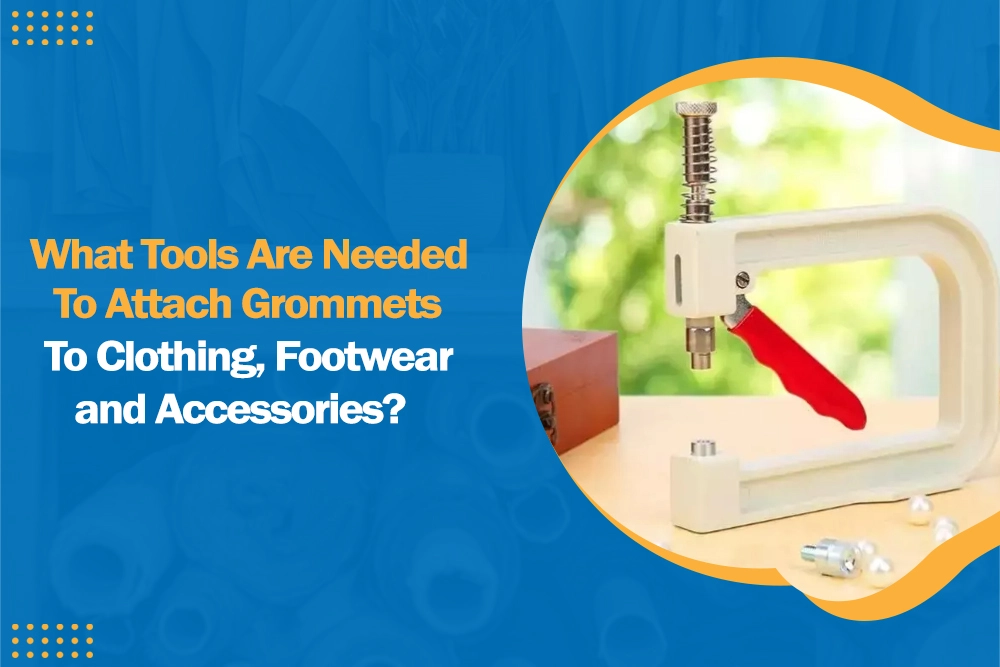
Whether you’re attaching grommets as fashion accents or to protect holes for drawstrings, you need the right tools to set them. When adding grommets to corsets, tops, pants, jackets, and leather handbags, choosing the right tool for your project is just as important as choosing the right grommet.
Washers
Grommets can be inserted into any fabric, from lightweight mesh fabrics to leather, but using the right grommet and washer combination is important. The main types of grommet washers are plain, tooth, spur, and neck washers.
- Plain grommet washers- One of the most commonly used washers is the plain washer. It’s best for lightweight applications where there isn’t a lot of stress on the grommet.
- Tooth grommet washers- Paired with self-piercing grommets, tooth washers create a tight bond between the fabric and grommet, so they are perfect for corsets, flags, and banners.
- Spur grommet washers- These washers have larger teeth and are used with heavy-duty rolled-rim grommets. They grip the fabric and keep the grommet from being ripped out of place, so they are useful when there is a lot of motion or with heavy fabrics like canvas.
- Neck grommet washers- The longer neck of these washers makes them the ideal choice for leather projects or when there are multiple layers of fabric.
Grommet Tools
No matter what project you’re working on, you need the right tools to set grommets. Each size of grommet requires the right-sized die tool set for proper setting, and you have a lot of different tools to choose from, including hammer and anvil kits, grommet pliers, and grommet press machines.
The grommet tool kit is the least expensive option for the home sewing enthusiast who wants to set a few grommets in their work without making a significant investment. Grommet tool kits are available for every fabric and grommet, and they come with an anvil and setter tool.
These kits work great for setting grommets, eyelets, snaps, and jean buttons. Many also come with a hole punch to make perfectly round holes for your grommets.
Grommet pliers are typically used for small grommets and eyelets, and they come with an adjustable setting so that you can easily set the size of grommet you need. They are indispensable for home sewing professionals who are setting a lot of small grommets, eyelets, and snaps.
There are also hand presses and automatic grommet press machines for mass production. In some cases, they pay for themselves quickly because they save a lot of time.
How To Attach A Grommet
When attaching a grommet, the two pieces, called the grommet and washer, are pressed together, sandwiching the fabric in between. Depending on your tool, grommets are installed in different ways, but all installations involve the same basic premise.
Start by choosing a solid surface and use a backer board to prevent damage to your work area.
- Mark where your grommets will be placed.
- Punch or cut a hole where the grommet will go. You may need to use interfacing to reinforce the material. If you’re using self-piercing grommets, you can skip this step.
- Working from the back of your project, insert the grommet (the male end) and push it up through the fabric hole.
- Place the washer on top.
- Place the anvil under the grommet and the setter on the washer.
- Tap the setter firmly with a hammer to secure the grommet.
If you’re using a hand press or grommet pliers, the same basic method is used, but the tool will do the work of pressing the grommet together.
Elevate Your Next Fashion Project With Grommets
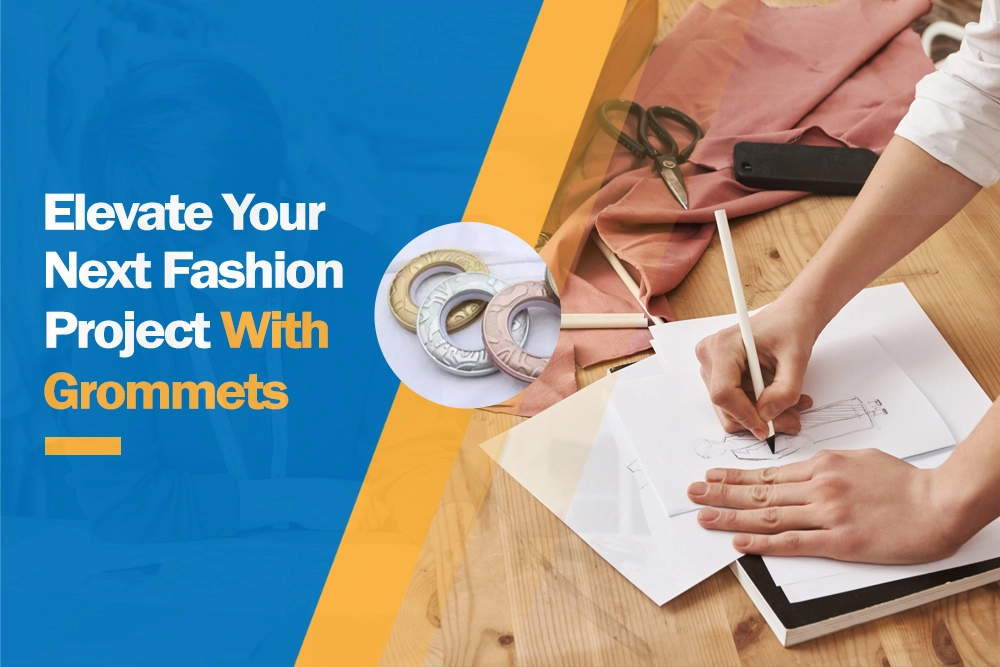
Don't miss out on the grommet trend! Make a bold statement and elevate your next fashion project using grommets to add a touch of detail and flair to your design. Visit our Grommet Page and explore the art of grommeting with our complete selection of tools and grommets, including tips and how-to articles.
